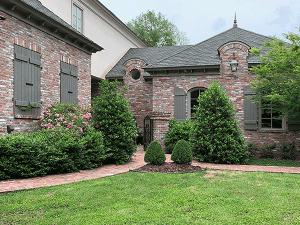Exploring the Versatility and Durability of Bricks
Bricks have long been celebrated as one of the most durable and versatile building materials in construction. With proper maintenance, brick structures such as walls, foundations, pillars, and patios can last for decades or even centuries. From classic red bricks to modern engineered varieties, bricks come in numerous types to suit a wide range of applications.
Brick Types and Applications
- Burnt Clay Bricks: Among the oldest and most widely used, burnt clay bricks are made by pressing wet clay into molds and firing them in kilns. They are typically reddish and classified into four quality grades, with first-class bricks offering superior strength and durability. Common uses include masonry walls, columns, and foundations, though they often require plastering for a finished look.
- Sun-Dried Clay Bricks: Also known as mud bricks, these are among the earliest forms of construction materials. They are made by molding clay and drying it in the sun. While cost-effective, they are less durable than their fired counterparts and best suited for areas with low rainfall.
- Sand Lime Bricks: Made by combining sand, lime, and fly ash, these bricks are known for their smooth finish, precise edges, and load-bearing strength. They are commonly used for structural foundations, walls, and decorative applications due to their versatility and clean appearance.
- Engineering Bricks: These high-density bricks are fired at extremely high temperatures, resulting in exceptional durability and low porosity. Their resistance to water and frost makes them ideal for use in sewers, retaining walls, and foundational projects.
- Concrete Bricks: Produced by pouring concrete into molds, these bricks are frequently used for facades, fences, and other aesthetic applications. Available in various colors, concrete bricks offer a modern and urban aesthetic.
- Fly Ash Clay Bricks: A sustainable option, these bricks incorporate fly ash—a byproduct of coal burning—and clay, fired at high temperatures. They are lightweight, fire-resistant, and used in structural walls and foundations, though their tendency to expand requires careful application.
- Fire Bricks: Designed to withstand extreme heat, fire bricks are made with silica and alumina and are commonly used to line fireplaces, kilns, and ovens.
Advantages of Using Bricks
Bricks offer numerous benefits, making them a preferred choice for builders and architects. Their aesthetic variety ensures a fit for almost any design, while their strength and resistance to wear make them durable. Bricks regulate moisture, providing temperature and humidity control, and their fire resistance offers protection for up to eight hours in some types. Additionally, bricks provide excellent thermal and sound insulation, enhancing energy efficiency and reducing noise.
How Bricks Are Made
Traditional bricks are crafted from clay, shaped into molds, and either sun-dried or kiln-fired to achieve strength and durability. Modern bricks incorporate materials such as concrete, ash, or silica to improve their properties for specific applications. The manufacturing process can also be adapted to produce specialized bricks, such as perforated, bullnose, or paving bricks.
Categorization and Uses
Bricks are categorized based on various factors, including their manufacturing method (fired vs. unfired), use (structural vs. decorative), and features (solid vs. hollow). Specialized bricks like veneers, airbricks, and capping bricks serve unique purposes, from lightweight cladding to ventilating structures.
With their unmatched durability, versatility, and aesthetic appeal, bricks remain a cornerstone of construction, suitable for projects ranging from residential homes to large-scale infrastructure. Whether used for their structural strength or visual charm, bricks continue to stand the test of time in the building industry.

